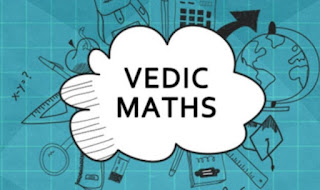VEDIC MATHS
By OMKAR TENDOLKAR
Hello friends,
This is post number 83 from the series of "Vedic maths" blogs. Here in this blog we will learn about "Types of Decimals"
Decimals:
Here in this post, we shall look at methods to convert fractions to decimals.
Three Types of Decimals:
There are actually three types of decimals that we come across.
- Recurring decimals
- Non-recurring decimals
- Non-recurring and unending decimals
Let’s spend some time and learn about each of them.
1. Recurring Decimals:
Let’s first take the case of recurring decimals, which basically consist of never-ending digits that repeat or recur.
Examples:
1 / 3 = 0.3333....
1 / 9 = 0.1111....
Sometimes, the digits repeat in groups like this,
1 / 99 = 0.01010101......
These decimals occur whenever the denominator of the fraction has prime numbers other than 2 or 5, such as 3, 7, 11 and 13 as factors.
2. Non-recurring decimals :
A non-recurring decimal occurs whenever the denominator of a fraction has 2 or 5 as factors. Unlike recurring decimals, these terminate after a certain number of digits. A point to note here is that every 2, 5 or 10 in the denominator gives rise to one significant digit in the decimal.
Examples:
- 1 / 5 = 0.2
- 1 / 7 = 0.5
- 1 / 10 = 0.1
All terminate after one significant digit in the decimal.
- 1 / 4 = 0.25
- 1/ 100 = 0.01
Similarly, and all terminate after two significant digits in the decimal.
3. Non-recurring and unending decimals:
Let’s now understand a non-recurring and unending decimal. This basically occurs when the numbers are irrational.
This occurs for example in irrationals such as
π = 3.141592...
√2 = 1.414213...
In next blog we will discuss about "Auxilliary Fraction-I".
Are you excited for this?...
Then, please wait for it.
I will post my new blog in next week.
We will meet very soon through our next blog. Till that stay connected, stay healthy and stay safe.
Thanks
for giving your valuable time.
Good day😊


Comments
Post a Comment